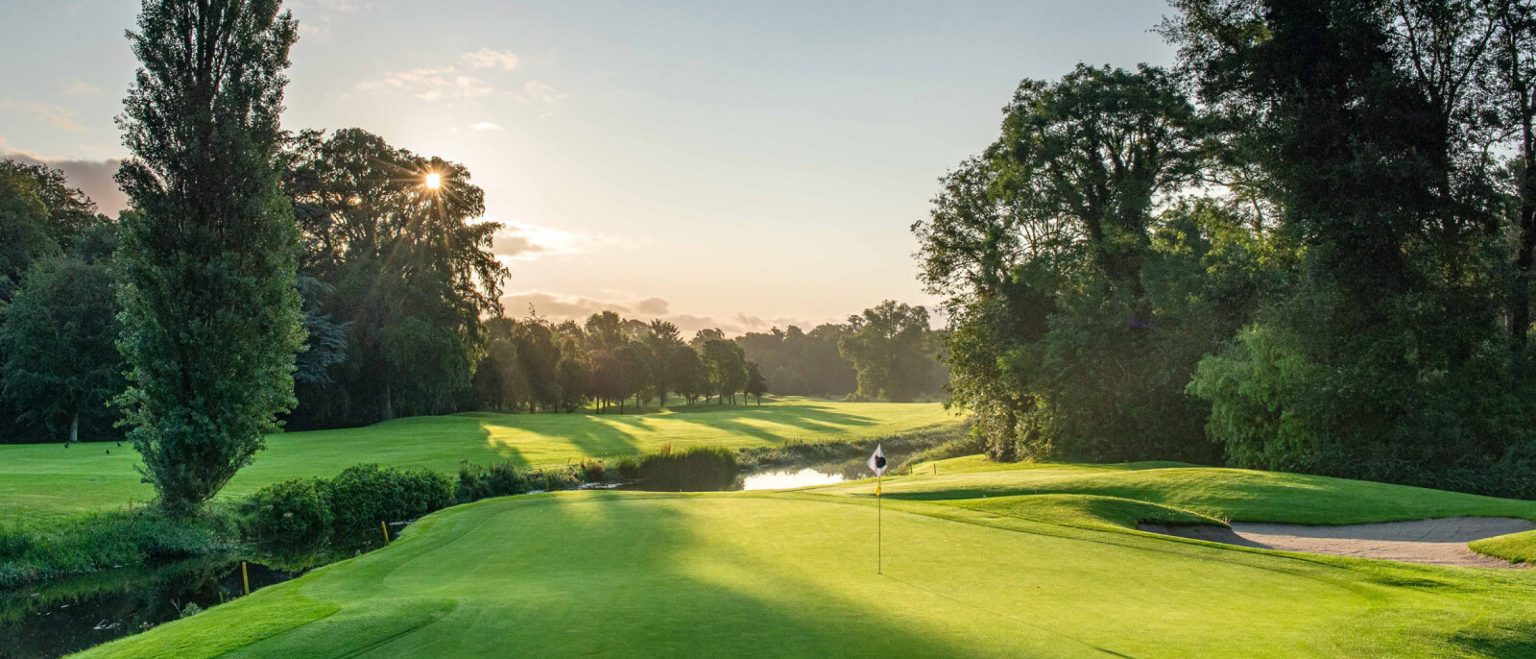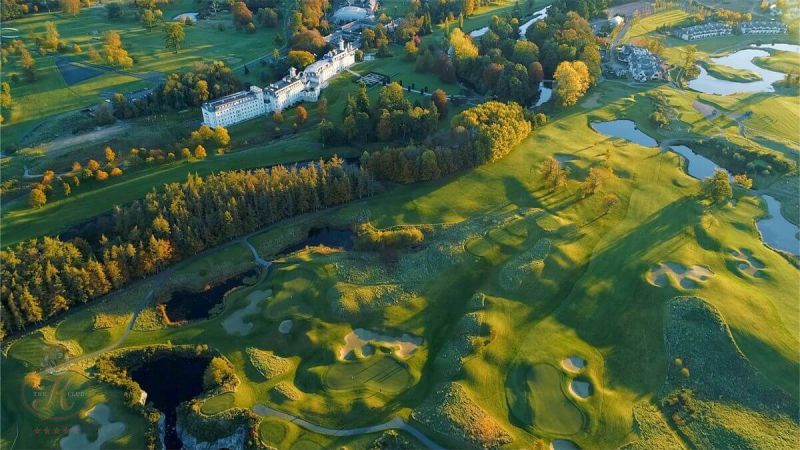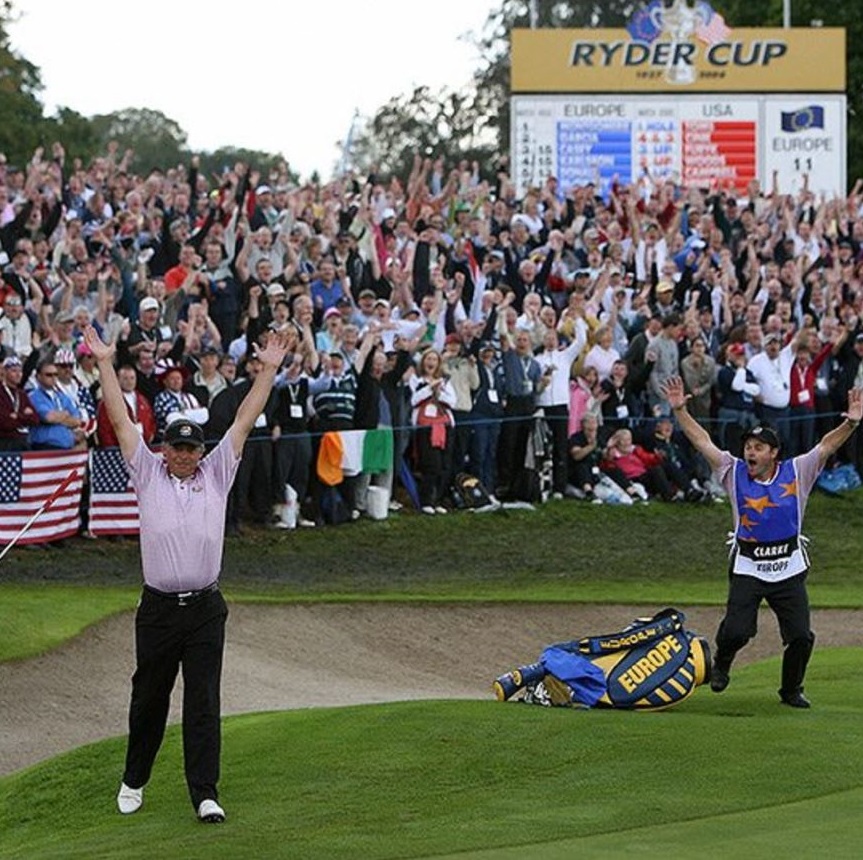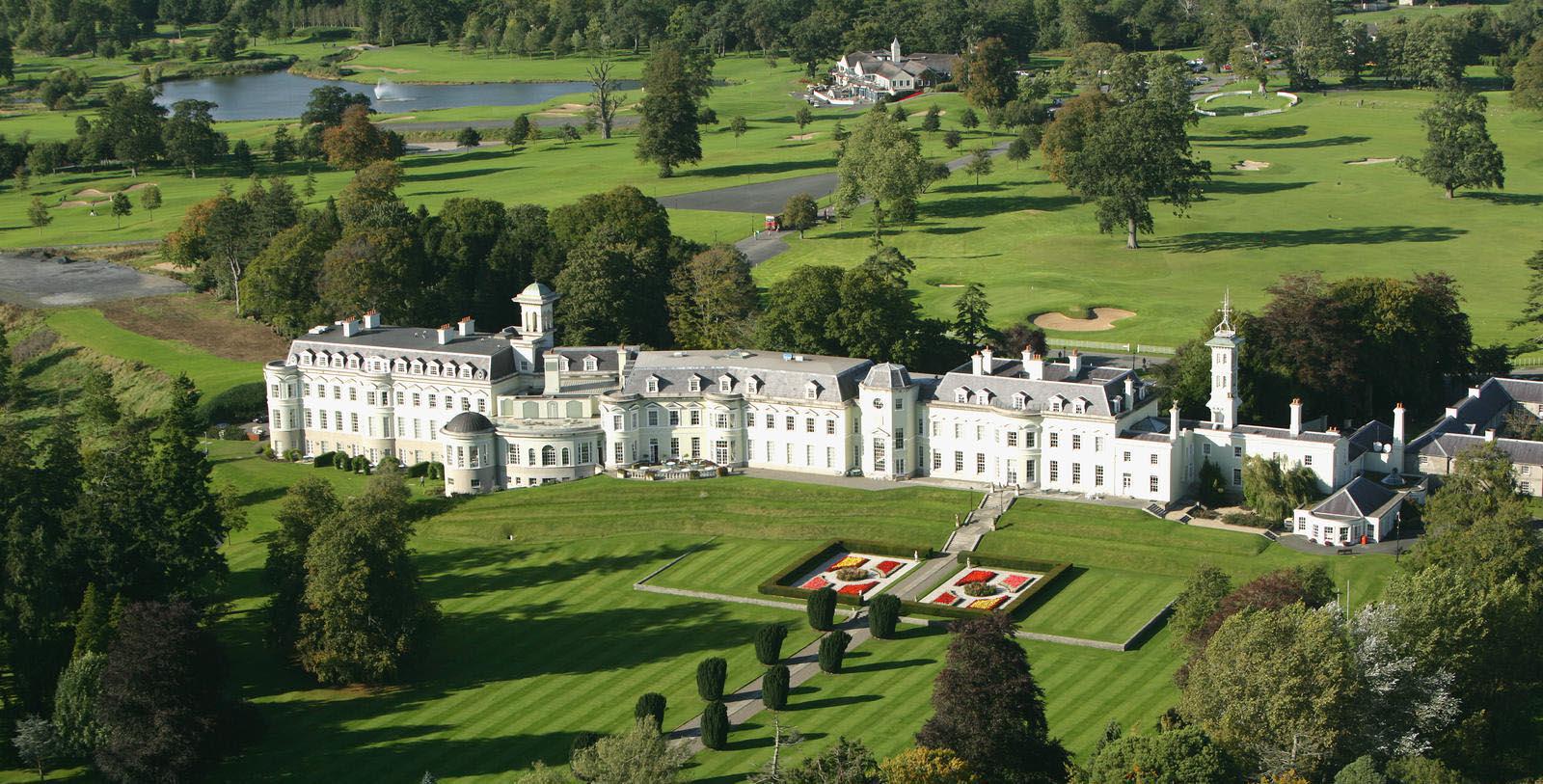Receive for Free - Discover & Explore eNewsletter monthly with advance notice of special offers, packages, and insider savings from 10% - 30% off Best Available Rates at selected hotels.
golf
Discover the Palmer North and South Courses, which were both designed by the legendary professional golfer Arnold Palmer.
The K Club Set to Host Horizon Irish Open
Serving as the site for the Irish Open back in 2016, The K Club’s Palmer North Course will host the renowned tournament again in 2023, 2025, and 2027. Watch this video to see what the team has done to prepare for the competition.
WATCH NOWIn the late 1980s, the Jefferson Smurfit Group obtained the historic Straffan House. Intent on preserving the structure, the corporation subsequently renovated the entire site into an upscale resort known as “The K Club.” It was the desire of the Jefferson Smurfit Group to make The K Club one of the most exclusive places to stay in all Ireland and endeavored to outfit it with only the finest amenities. To that end, the company had hired the legendary Arnold Palmer to oversee the creation of a gorgeous, 18-hole golf course. Known as the “Palmer North Course,” Palmer’s team magnificently wove the 7,178-yard facility into the verdant landscape of surrounding County Kildare. But the holes also bore Palmer’s desire to cultivate a difficult, yet rewarding, experience that would leave golfers feeling a sense of accomplishment. As such, the course contained a complex network of hazards, with the meandering River Liffey being the greatest. Palmer’s vision for the course proved to be incredibly popular, as it transformed The K Club into one of Europe’s most prevalent golf havens during the early 1990s. The attention ultimately inspired the resort to hire Arnold Palmer again a decade later to design a second course—the “Palmer South Course.” Composed of another 18 holes, Palmer proceeded to design a magnificent layout that served as a worthy companion to the Palmer North Course. Indeed, the new Palmer South Course quickly rivaled tits sibling in popularity following its own grand opening in 2003.
Countless golfers subsequently became enchanted with both courses following their respective debuts, particularly established professionals who competed regularly on the prestigious European Tour. In fact, the PGA European Tour requested that The K Club host the European Open starting in 1995. The tournament subsequently remained at the resort for many years thereafter, seeing quite a few memorable events. For instance, the very first European Open held at the Palmer North Course saw two-time Masters Tournament-winner Bernhard Langer win his 35th competition victory after Barry Lane in a tense play-off. In 1999, Lee Westwood won the first of his two European Open titles, marking a period of success that ultimately saw him win the European Tour’s Order of Merit—one of the greatest achievements that a player on the circuit could ever receive. Retief Goosen was another prolific recipient of the award to earn a European Open title at The K Club, which he did back in 2004. (He then won his second U.S. Open title two weeks later.) And in 2007, the great Colin Montgomerie—who won the Order of Merit eight different times—beat Niclas Fasth by just a single stroke for his final triumph on the European Tour.
But The K Club has entertained many other competitions, too, such as the 2016 Irish Open, which saw Rory McIlroy shoot an amazing 12 under par for the victory. Perhaps the most special contest ever hosted on-site was the 36th Ryder Cup Matches in 2006. Regarded a watershed moment for Irish golf, the 36th Ryder Cup Matches saw a talented European team handedly outscore its American rivals 18 ½ to 9 ½. The victory marked the first time that Europe had won three consecutive titles throughout the history of the Ryder Cup Matches. Guests today can still enjoy the rich heritage that exists at the Palmer North and South Courses, with both locations remaining true to the vision that Palmer originally established. The PGA European Tour has even selected the two facilities to host the Irish Open again in 2023, 2025, and 2027! The K Club has a wealth of other golf experiences to try beyond its noted courses, as well. The K Club has recently opened an impressive compound known as the “K Golf World,” which is replete with innovative simulators designed to improve all elements of a person’s style of play. Using cutting-edge technology, guests can use a combination of realistic video simulators and interactive stations to study everything from their club speed to ball spin rates. (K Golf World also features a fully functional bar that can provide a much-needed break from practicing.)
-
About the Location +
Ireland is a nation deeply defined by its history, which harkens back millennia. Nowhere is this more evident than in County Kildare. Some of the earliest known human settlements date to Neolithic times, although the many of its current communities first emerged around several Christian monasteries in the 5th century. Perhaps the greatest of those churches was the one established by St. Brigid along the western side of the famed Curragh Plain known as “Cill Dara.” At the time, County Kildare was the domain of the medieval Kings of Leicester. Vikings continuously harassed the area at the dawn of the Viking Age, frequently travelling across the Irish Sea to attack the area through the 9th and 10th centuries. Some Viking bands eventually settled in portions of County Kildare, such as the group of Danish marauders that founded the town of Leixlip. Peace briefly returned to the region until the Normans arrived in the 1170s. Led by Richard de Clare, 2nd Earl of Pembroke, the invaders deprived the local Gaelic clans of their lands and raised many of the towering castles that still dot the region today. The natives fled into the nearby mountains and bogs to wage a constant guerilla war that lasted for centuries. The Normans, meanwhile, created many new communities in an area that came to be known as “The Pale,” of which County Kildare was a part.
A few of the area’s most prominent noble families, such as the Fitzgeralds and the Geraldines, became quite established around this time. The Anglo-Norman invaders and the native Gaels gradually achieved peace with one another over several generations, too. Even though intermarriages had somewhat cooled the cultural tensions between the two groups, political turmoil between the Irish and English nobles reignited conflict on many occasions. In the 16th century, for instance, the Tudor monarchs of England sought to enhance their power over County Kildare by aggressively suppressing the autonomy of the locals. This agitation was only made worse when Lord Protector Oliver Cromwell—who briefly overthrew the English monarchy a century later—increased the activity tenfold. Rebellions to such prohibitive policies occurred, culminating with the uprising of 1798 that sought to remove English influence once and for all. Inspired by the successful movements in America and France, the Irish in County Kildare—and Ireland as a whole—unsuccessfully attempted to establish a sovereign republic free from Great Britain. While the rebellion had transpired all over Ireland, it emerged in such places like Nass, Prosperous, and Ballymore-Eustace that May. One of its central leaders, Theobald Wolfe Tone, had connections to County Kildare, as his family were scattered throughout such towns like Blackhall and Clane.
Ireland finally became independent with the signing of the Anglo-Irish Treaty in December 1921, ending years of political strife. Nevertheless, County Kildare had also emerged as one of the nation’s most prosperous areas a century prior. Agriculture proliferated throughout the county as a result of the fertile soil found at Curragh Plain, while new railroads introduced an unprecedented number of goods across the land. Its relative financial security subsequently spared County Kildare from the effects from various economic calamities, the most notable of which was the Great Famine of the 1840s. The creation of several military barracks along the major thoroughfares leading into Dublin, Cork, and Limerick spawned an important source of economic activity in the 19th century, as many local businesses thrived on serving their soldiers. When the barracks were vacated in the early 20th century, newer industries—such as Irish Ropes and Newbridge Cutlery—appeared to fill the vacuum. Soon enough, they were joined by the likes of international manufacturing giants Hewlett-Packard, Intel, and Pfizer. Today, County Kildare is one of the richest outside Dublin and it among Ireland’s most vibrant. Equine sports now define the local economy, yet farming is still paramount throughout the region.
-
About the Architect +
Arnold Palmer: Remembered as “The King,” Arnold Palmer was one of the most prolific professional golfers to ever play the sport. Palmer himself was born amid the start of the Great Depression in a working-class steel-mill town located right outside of Pittsburgh. His father, Deacon, worked as the head superintendent for the neighboring Latrobe Country Club and instilled a love of golf in him at a young age. Indeed, Palmer often went with his father the the club whenever he had to conduct regular course maintenance. Palmer gradually showed a natural talent for the game, eventually winning nearly two dozen contests across Pennsylvania as a young man. His skill proved to be so great that Wake Forest University granted him a golf scholarship in the early 1950s. But he ultimately left school after a couple of semesters following the death of a close friend and enlisted for three years in the U.S. Coast Guard. Nevertheless, Palmer’s passion for golf did not disappear during his time with the service. (He even went as far as to build a nine-hole practice course at the Coast Guard Training Center in Cape May, New Jersey.) Upon leaving the Coast Guard in 1954, Palmer completed his studies and began selling paint in Cleveland, Ohio. But he yearned to play golf competitively again and entered the 59th U.S. Amateur Championship mere weeks after arriving back home. Winning first place, his success at the tournament inspired Palmer to try his luck on the professional circuit. He subsequently quit his day job and joined the PGA Tour at the end of the year.
While Palmer played in a few contests, his first real success came when he won the 51st Canadian Open during his rookie campaign. The victory foreshadowed the beginning of a truly historic career that saw Palmer win an astounding 95 professional championships. Sixty-two of those victories were achieved on the PGA Tour, placing him 5th on its all-time winners list. (Today, he is currently surpassed by Sam Snead, Tiger Woods, Jack Nicklaus, and Ben Hogan—one of his idols.) Perhaps his most impressive victories were the seven major championship titles he won throughout the 1950s and 1960s. Beginning with the 22nd Masters Tournament in 1958, Palmer ultimately placed first at two British Opens, three other Masters Tournaments, and a single U.S. Open. But his successes on the PGA Tour were not merely confined to tournament wins. On the contrary, Palmer received numerous individual accolades for his unrivaled style of play, including four Vardon Trophies, two PGA Player of the Year titles, and one Bob Jones Award for distinguished sportsmanship. He was also the tour’s leading money winner for four years, too! He even eventually got a spot on the American team at six World Cups and seven Ryder Cups! Palmer’s accomplishments attracted an incredibly large fanbase across the United States, many of whom had started following the sport because of his talent. Palmer thus had played a integral role popularizing golf in the country, with only fellow colleagues Jack Nicklaus and Gary Player matching his level of influence. (Media outlets referred to the men as “The Big Three.”)
During the 1970s, Arnold Palmer decided to pursue another element of golf—golf course architecture. He specifically formed a design firm known as the “Palmer Course Design Company” in 1972, which he later renamed as the “Arnold Palmer Design Company.” Palmer worked closely alongside architect Ed Seay, an acolyte of Ellis Maples and fellow member of the America Society of Golf Course Architects. Together, the men crafted the designs of over 300 different golf courses located in 37 states over the next three decades. Among some of their best creations included Musgrove Mill Golf Club, Old Tabby Golf Links, and Tradition Golf Club at La Quinta. But the Arnold Palmer Design Company had also produced the layouts of various courses in 24 other countries as well, such as the Tralee Golf Club in County Kerry, Ireland. (The company was even commissioned to create the first public golf course in China, the Chung Shan Hot Spring Golf Club.) Palmer remained deeply involved with the company right up until his death in 2016. The Arnold Palmer Design Company has nonetheless remained an innovator in golf course architecture, and it continues to create many spectacular facilities around the world. Palmer himself has been largely hailed as one of the people responsible for making golf accessible to ordinary Americans. Indeed, his legacy has been preserved in the World Golf Hall of Fame as one of its inaugural members in 1974. Few other people have truly left as profound an impact on the world of golf as the great Arnold Palmer.
-
Famous Historic Tournaments +
36th Ryder Cup (2006): In September 2006, some of the world’s finest professional golfers descended upon The K Club for yet another round of the Ryder Cup—an international tournament held between two teams of golfers from Great Britain and the United States. (The 36th Ryder Cup Matches were the first time that the tournament had been held in Ireland, too.) Despite originating in the United Kingdom, the American team had won most of the competitions to date. However, the European team had dominated the two most recent contests and looked to defend its title. Captained by World Golf Hall of Famer Ian Woosnam, the European team would try once more at The K Club. In fact, the team drew special motivation from one of their colleagues, Darren Clarke, who had just lost his wife to cancer some six weeks prior. The task would prove daunting though, as the American team was headlined by legendary golfers Tiger Woods and Phil Mickelson. Nevertheless, the European team proceeded to outscore their American rivals soundly. It seemed like the tournament would remain close for a while, with the European team only netting a handful of points over the Americans during the first two days of four-ball sessions. But the gap started to widen on the final day, after the European team managed to pull far ahead during single-match play. Indeed, the Europeans had managed to score 8.5 points to the Americans 3.5. A key moment occurred when English golfer Luke Donald sank a putt during his round against the American Chad Campbell to ensure that Europe’s lead remained almost insurmountable. Then, minutes later, Swedish rookie Henrik Stenson made another spectacular putt that officially won the tournament for the European team. (Stenson would later win the 2016 U.S. Open and would be the European Tour’s Golfer of the Year twice.) The final point total between Europe and the United States was 18 ½ to 9 ½, which was among the greatest margins ever seen at any of the previous Ryder Cup Matches!
-
Famous Historic Golfers +
Bernhard Langer, winner of two major championships, specifically the Masters Tournament in 1985 and 1993.
Ian Woosnam, winner of 52 championships, including the Masters Tournament in 1991.
Colin Montgomerie, winner of 54 championships, as well as eight European Tour Order of Merit awards.
Retief Goosen, winner of two major golf championships, specifically the U.S. Open in 2001 and 2004.
Pádraig Harrington, winner of three major championships and captain to six consecutive Ryder Cup teams.
Tiger Woods, winner of 15 major golf championships and winner of the PGA Player of the Year a record 11 times.
Phil Mickelson, winner of five major golf championships, including the Masters Tournament and the PGA Championship.
Rory McIlroy, winner of four major golf championships, including the PGA Championship, the U.S. Open, and the British Open.





























